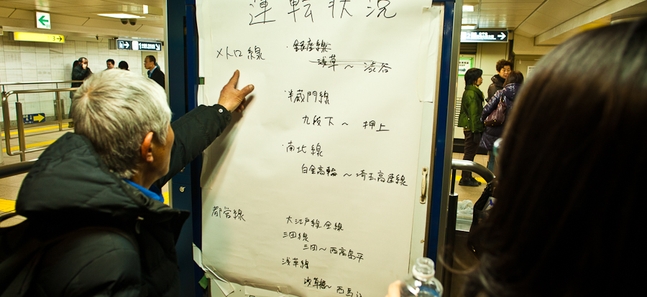
Friday's earthquake and the looming threat of blackouts have thrown the usually well-oiled Tokyo rail system into disarray. We'll be updating this information as the day goes on.
As of Tuesday, 5.20pm (percentages indicate volume compared to regular service)...
Recent Comments